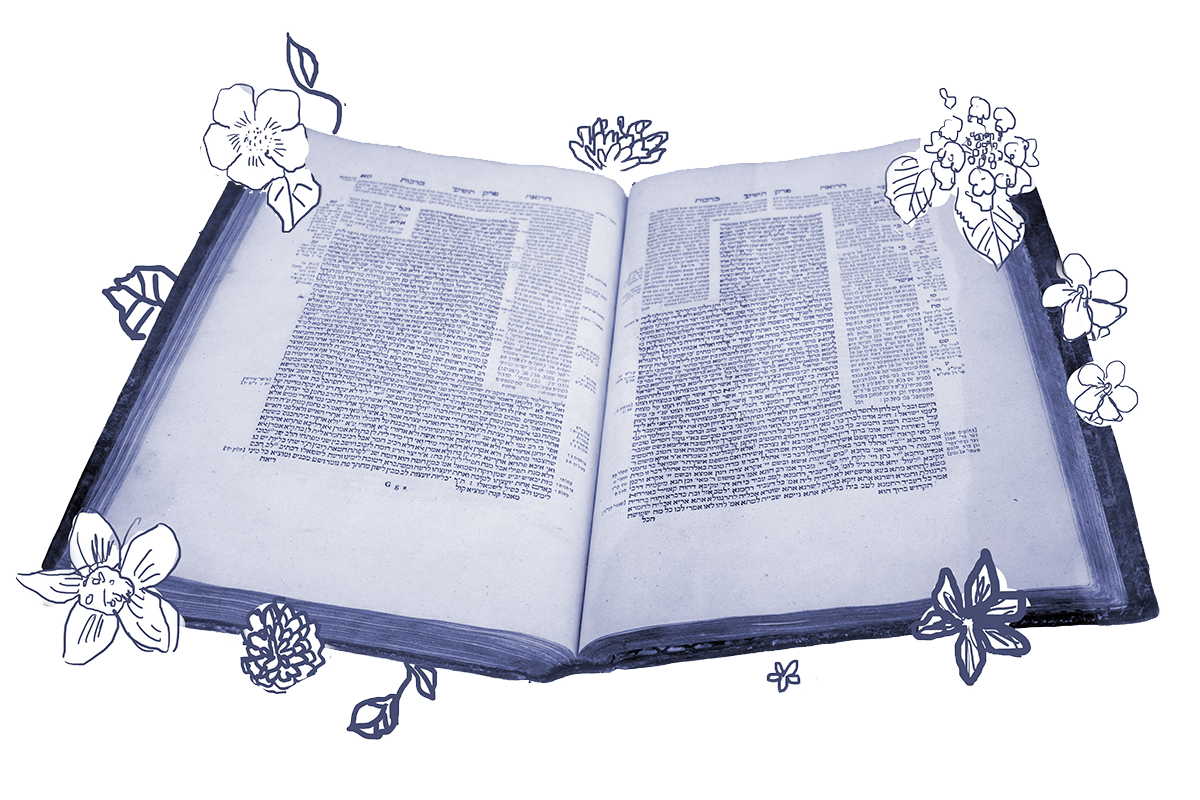Before the printing press was invented in the 1400s, texts — which were very expensive — were laboriously written by hand and often memorized. Long sections of text would be thoughtfully ordered to make memorization easier, often grouping content in clusters of three or seven and making use of mnemonic devices — the sort you might have used back in grade school to study for a test.
We learn today that some of these same techniques were used to construct Judaism’s central prayer: the Amidah. The rabbis intentionally designed the Amidah — a cascade of blessings of praise, petition and gratitude — as a logical progression, with each blessing flowing from the next, or at least placed in a memorable position. This made the rhythm of prayer more natural, and made remembering the prayers easier. Or maybe it’s the reverse: Maybe the rabbis devised mnemonics to help people remember the order. It’s hard to say — see what you think!
The Amidah begins with three blessings of praise, which are built around the themes of patriarchs (avot), mighty deeds (gevurot) and holiness (kedushah) are each rooted in the opening of Psalm 29:
The sages taught:

Help us keep Jewish knowledge accessible to millions of people around the world.
Your donation to My Jewish Learning fuels endless journeys of Jewish discovery. With your help, My Jewish Learning can continue to provide nonstop opportunities for learning, connection and growth.
From where is it derived that one says the blessing of the patriarchs? As it is stated: “Ascribe to the Lord, mighty ones.” (Psalms 29:1)
And from where is it derived that one then says the blessing of mighty deeds? As it is stated in the continuation of that verse: “Ascribe to the Lord glory and strength.” (Psalms 29:1).
And from where is it derived that one then says the blessing of holiness? As it is stated in the next verse: “Give to the Lord the glory due to his name; worship the Lord in the beauty of holiness.” (Psalms 29:2)
If you know Psalm 29 — and many people did memorize psalms then as now — you have a mnemonic to remember the first three blessings of the Amidah.
From there, the Amidah turns to a set of petitionary prayers, the first one asking for understanding (binah). Why is that? Again, it is biblical verses that suggest the progression, this time from two adjacent verses in Isaiah:
And why did they see fit to institute to say the blessing of understanding (Amidah blessing #4) after the blessing of holiness (Amidah blessing #3)? As it is stated: “They shall sanctify the Holy One of Jacob, and shall revere the God of Israel” (Isaiah 29:23), and adjacent to that verse it is written: “They also that erred in spirit shall come to understanding.” (Isaiah 29:24)
Likewise, another verse from Isaiah — “And they will understand with their heart, repent, and be healed” (Isaiah 6:10) — transitions us from the theme of understanding to repentance which is why — you guessed it — the fifth blessing of the Amidah is on the theme of teshuvah.
You might suppose, based on that verse from Isaiah, that healing would come sixth in the order of blessings. After all, Isaiah says: understand, repent, be healed. But in fact, the sixth blessing of the Amidah asks for forgiveness and it is only the eighth blessing that asks for healing. The rabbis have a verse to explain that, too: Isaiah 55:7, which mentions repentance and then forgiveness. And really, this is a logical sequence all on its own as well.
After that, we learn that the seventh prayer of the Amidah is that of redemption (geulah), because the number seven features prominently with regard to the concept of redemption. As Rava explains:
Since the Jewish people are destined to be redeemed in the seventh year (of the sabbatical cycle), consequently, they fixed redemption as the seventh blessing.
The seventh year of the sabbatical cycle, the shmita year, is a year of release for the land — which is not farmed and allowed to rest — and for debts, allowing people to enter the next seven-year cycle with a clean slate. In keeping with this theme, Rava teaches, the ultimate redemption of the Jewish people will also come in the shmita year — and we will pray for it in the seventh blessing of the Amidah.
The eighth prayer of the Amidah is likewise remembered for its number. We pray for healing (refuah) in the eighth blessing because:
Rabbi Aha said: Since circumcision was assigned to the eighth day of life, and circumcision requires healing, consequently, they established healing as the eighth blessing.
And so on. We encourage you to explore the page to learn more. Nowadays, most of us don’t need these mnemonics to remember the order of the prayers — we can access the text in so many ways. But in antiquity, these may well have helped the Jewish people to all recite the Amidah in order — the same order that we use to this day.
Read all of Megillah 17 on Sefaria.
This piece originally appeared in a My Jewish Learning Daf Yomi email newsletter sent on December 29th, 2021. If you are interested in receiving the newsletter, sign up here.



